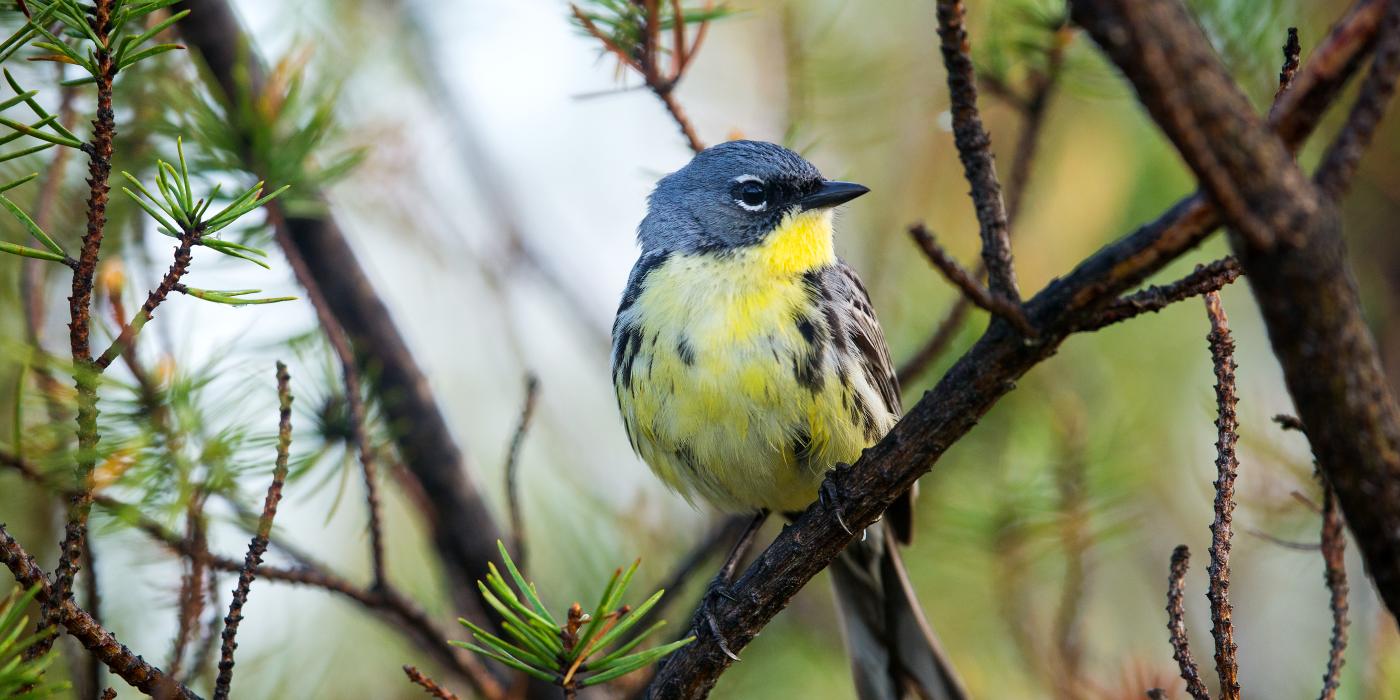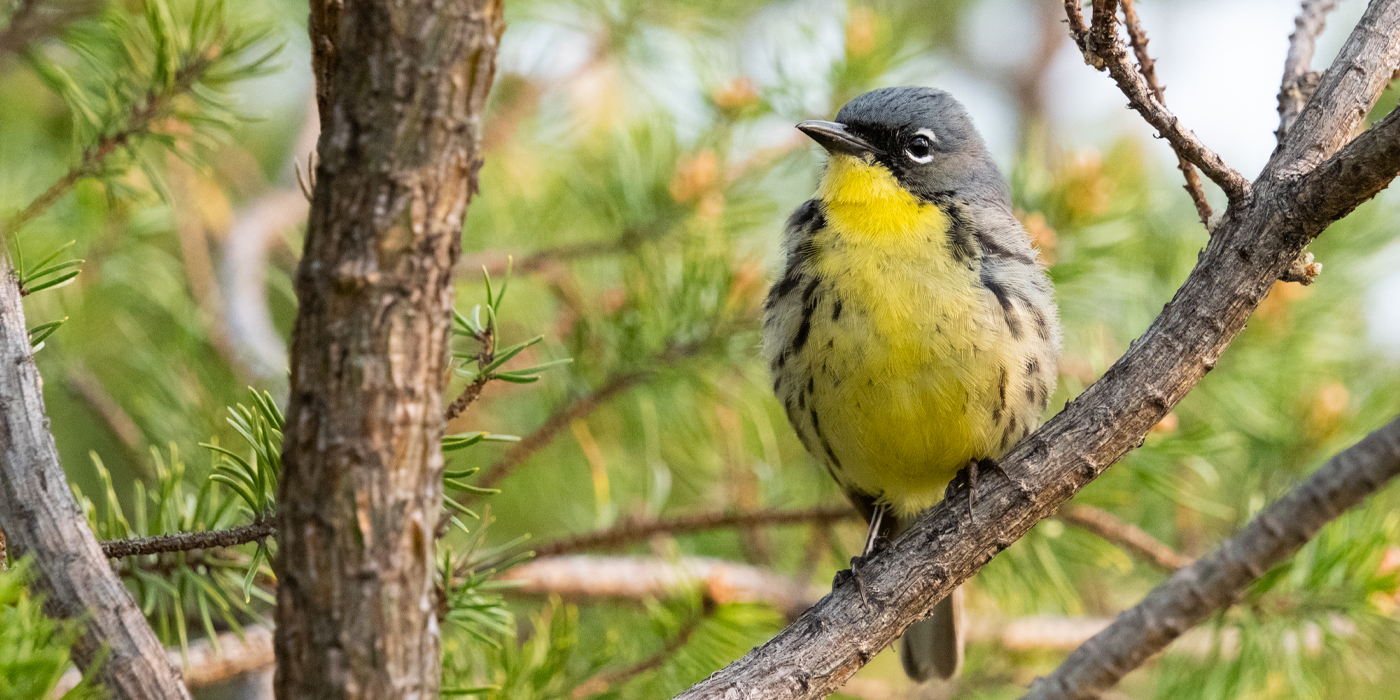Brown-Headed Cowbirds: From Buffalo Birds to Modern Scourge
What is a Cowbird?
The brown-headed cowbird (Molothrus ater) is a brood parasite that lays its eggs in the nests of other birds. These "foster parents", called hosts, usually raise cowbird young at the expense of their own eggs or young.
Cowbirds earned their common name from the habit of following herds of buffalo (and cattle) in search of the insect prey that were flushed up by the large grazing mammals.
Plumage of the male brown-headed cowbird is mostly glossy black with a contrasting dark brown head, females are dull grayish brown. The dull plumage of the female is thought to be advantageous to the parasite, as it potentially makes them less conspicuous to host species.
Cowbirds are proof that one bad apple can spoil the whole bunch
Although cowbird parasitism occurs in almost all habitat types, cowbirds tend to select overgrown fields and forest edges more than other habitats for reproduction, and species that build open-cup nests in shrubs in these habitats are most commonly parasitized.
Because of their affinity for forest edges, increases in forest edge due to forest fragmentation can increase parasitism frequency for many forest bird species, including Neotropical migrants. Some species of forest-inhabiting Neotropical migrants have been found to suffer higher rates of nest parasitism in small, isolated forest tracts than in large unbroken forests. In addition, parasitism levels are often higher in regions with highly fragmented forests than in largely forested landscapes.
Portrait of a Parasite
Cowbirds have been called songbird chickens because they can lay more eggs than any other wild bird. A single female is capable of laying nearly one egg per day at the peak of the breeding season, and produces a total of 30-40 eggs over the 2-3 month breeding period (May-July). Because female cowbirds usually lay only one egg in a host nest, this translates into 30-40 nests parasitized (usually of at least several different species) per female in one season.
Typically, female cowbirds find potential host nests by perching during early morning hours in a location with high visibility such as a dead tree in a forest opening, observing behavior of host females that are building nests, and following the unsuspecting birds directly to their nests. Once the nest location is known, the cowbird returns during the egg-laying period of the host female and deposits her own egg in the nest.
By parasitizing during the host egg-laying period, the female cowbird improves her chances that the host female will be away from the nest often (allowing the cowbird access without being detected), and that the cowbird egg will be accepted by the host and receive full incubation.
In approximately 60-70% of nests parasitized, the cowbird removes one of the host eggs before laying her own egg. This is possibly to ensure that the host does not "notice" a different number of eggs in the nest, or to ensure that the cowbird egg receives full incubation (an extra egg laid in the nest could make it difficult for the female to incubate all eggs evenly, resulting in some eggs—possibly the cowbird's—failing to hatch).
Cowbird eggs require an incubation period of only 11-12 days, whereas most host species require 12-14 days, and some as many as 17 days of incubation. Consequently, cowbird young hatch earlier than the host young, affording the parasite a distinct advantage in competing for food with its younger foster siblings.
Cowbirds tend to parasitize birds smaller in size than themselves. For example, by the time they are ready to leave (fledge) the nest, most warbler or vireo (the most common cowbird hosts) nestlings weigh less than half as much as cowbird nestlings. In fact, a fledgling cowbird is larger than the adult warblers and vireos! The monstrous cowbird nestling not only can cause host young to starve by monopolizing the food supply brought by parent birds but also literally may crowd host young right out of the nest.
All of these attributes of the parasite can add up to severe effects on the host family. Impacts of parasitism are different for different host species, but usually result in loss of at least one, and often all, of the 3-5 host young. Although each cowbird female only lays one egg in a nest, a high abundance of cowbirds in an area often will lead to many cowbirds parasitizing the same limited supply of host nests.
The presence of more than one cowbird in a nest almost inevitably leads to death of all host young. In addition, raising even one cowbird can potentially reduce the survival of host parents because of the increased physical effort needed to care for the ravenous intruder.
Why do Hosts Tolerate the Imposters?
Host species can be generally categorized as either rejecters or accepters of cowbird parasitism. Rejecters apparently recognize and remove cowbird eggs from their nests immediately after they are laid. Accepters rarely or never eject parasite eggs, incubating cowbird eggs and feeding huge, noisy cowbird young as if they were their own. Only 9 host species have been determined to be rejecters and most of these are large birds with beaks large enough to remove unwanted eggs easily.
Why some birds accept parasitism is unclear, but it may be because they simply do not recognize parasite eggs, or attempts at removing the cowbird egg could result in breakage and loss of their own eggs, or raising the cowbird is a better option than the risk of not nesting at all. Perhaps some accepter species, particularly those inhabiting forests, only encountered cowbird parasitism in the last 100 years and so have not evolved to recognize and reject the parasitism. In essence, they are easy targets for the invading cowbirds.
Luckily, some accepters are able to escape parasitism to an extent by nesting earlier or later than the cowbird breeding season (generally early May to early July), or by nesting more than once during a season (at least one nest attempt probably will not be parasitized).
Human-Made Problem
Almost everything humans do in manipulating our environment is beneficial to cowbirds. Removing or cutting into the forest for roads, settlements, or timber harvesting for example, can improve the habitat for cowbirds by creating grassy foraging areas, open perch sites for surveying hosts, and more access to host species in edge or open forest habitats. Agricultural practices that leave waste grain behind during winter provide superior winter feeding sites for cowbirds, improving their annual survival.
The historical range of the cowbird prior to European settlement was restricted to the open short-grass prairies of the Midwest. Presumably as a result of large-scale deforestation, introduction of cattle, and other activities associated with European settlement, the cowbird's range expanded rapidly eastward and the species was widespread throughout the eastern U.S. by the late 1800's.
A similar expansion happened in the west during the 1900's resulting in their distribution being spread throughout southern Canada and the lower 48 states. Cowbird abundance has continued to increase dramatically throughout the breeding range since 1900, possibly due to greater overwinter survival from an increase in food supply (residual agricultural grain) and increases in reproductive success from exposure to new, vulnerable host species.
Cowbirds are capable of exploiting human-altered landscapes particularly well because they are very generalized in their food requirements and habitat use. Preferred foraging areas are livestock areas that provide both insect and grain foods, but cowbirds also exploit bird feeders and refuse from campgrounds, picnic areas, etc.
Because no parental care is given to offspring, cowbird foraging areas can be distinct from reproductive areas, allowing female cowbirds to exploit a variety of habitats over great distances. Cowbirds have been found to commute up to 7 km daily between foraging and egg-laying areas.
How Can We Control Cowbirds and Parasitism?
Because cowbirds thrive in a human-altered landscape, there will be no easy solutions to the problem. However, some alternatives for controlling cowbirds exist.
Cowbird removal through trapping or shooting has proven useful in the conservation of endangered species such as the Kirtland's Warbler and Black-capped and Least Bell's vireos. For these species, this intensive cowbird control has drastically reduced the parasitism levels that threatened to drive these populations to rapid extinction. However, this controversial practice probably will only be effective in extreme cases such as these where host populations are small and localized. Cowbird trapping would be too costly and labor-intensive to be effective in the control of cowbird parasitism on a regional basis.
The most effective way to control cowbird numbers and the impact of cowbirds on Neotropical migrants is to control the features of the environment on which they thrive. Landscape-level measures that maintain large forest tracts with minimal edge to interior ratios (i.e., compact versus long, linear shapes) would be most effective. In addition, openings in forests such as for gas wells, picnic areas, etc. should be minimized and concentrated into a few areas rather than dotted throughout the forest.
Such long-term and large-scale habitat planning is ultimately necessary for conservation of Neotropical migratory bird species, not only to control cowbird populations but also to control populations of nest predators (raccoons, blue jays, crows, squirrels) that also increase in fragmented forests. Only through sound habitat preservation, planning, and management can we stem the expansion of cowbird populations and conserve our migratory birds.
Suggested Reading:
- Brittingham, M.C. and S.A. Temple. 1983. Have cowbirds caused forest songbirds to decline? BioScience 33:31-35.
- Friedmann, H. 1929. The cowbirds: A study in the biology of social parasitism. C. Thomas, Springfield, IL.
- Kelly, S.T., and M.E. Decapita. 1982. Cowbird control and its effect on Kirtland's Warbler reproductive success. Wilson Bulletin 94:363-365.
- Mayfield, H.F. 1977. Brown-headed cowbird: Agent of extermination? American Birds 31:107-113.
- Robinson, S.K., J.A. Grzybowski, S.I. Rothstein, M.C. Brittingham, L.J. Petit, and F.R. Thompson. 1993. Management implications of cowbird parasitism on Neotropical migrant songbirds. Pp. 93-102 in D.M. Finch and P.W. Stangel (eds.). Status and management of Neotropical migratory birds. USDA Forest Service, General Technical Report RM-229.
- Rothstein, S.I. 1975. An experimental and teleonomic investigation of avian brood parasitism. Condor 77:250-271.



